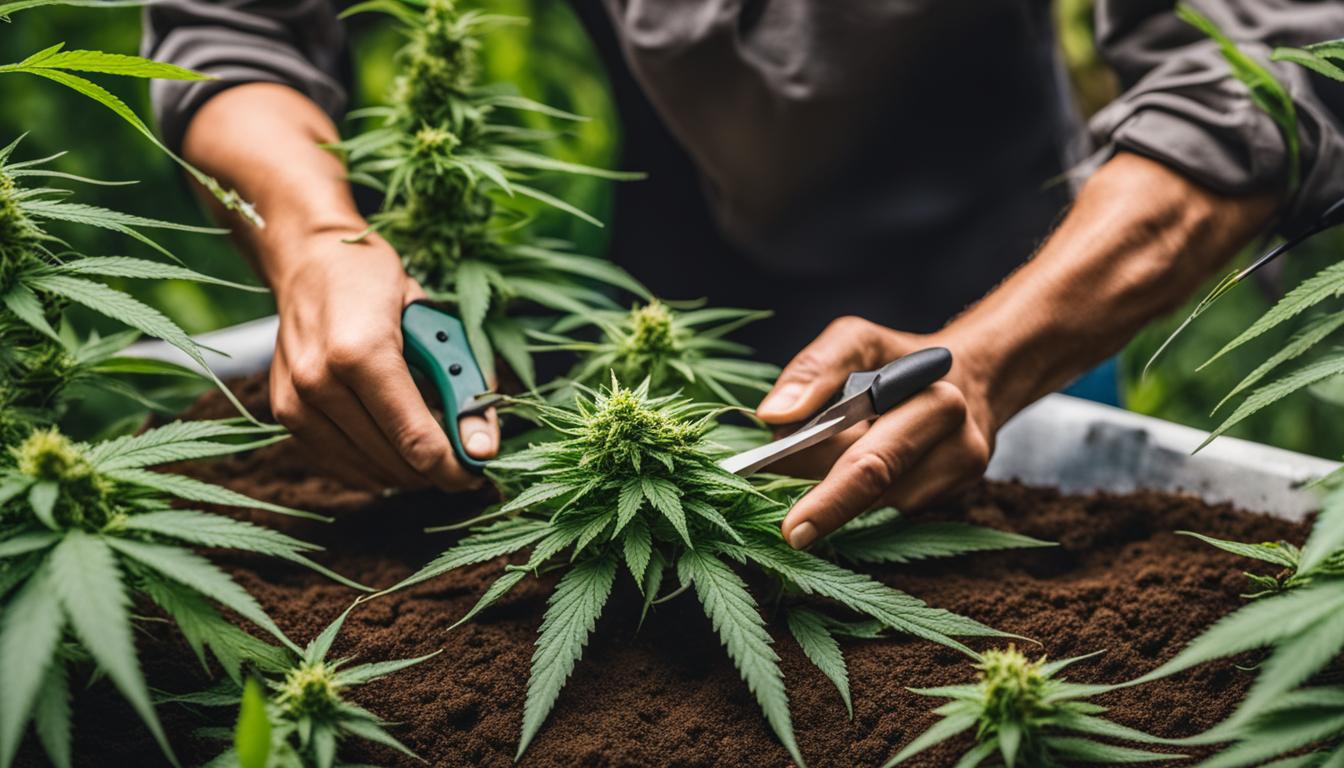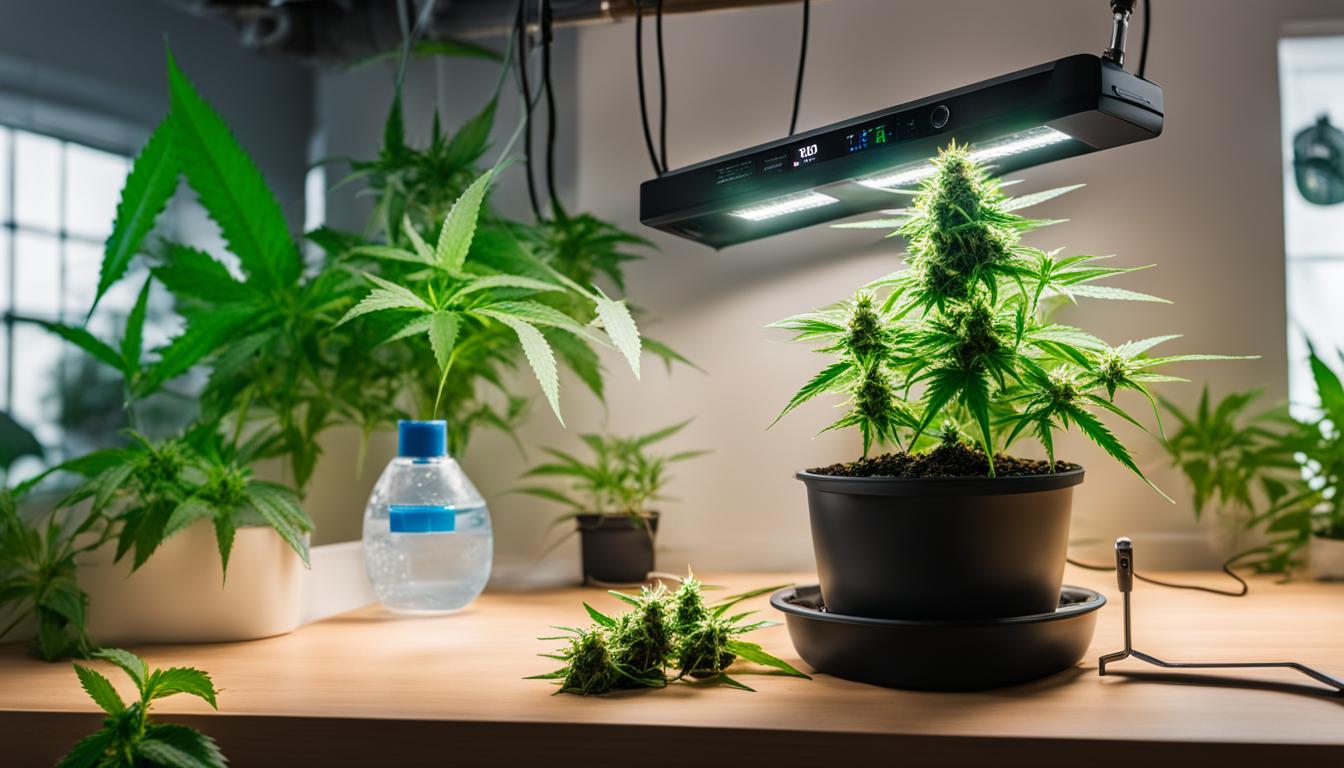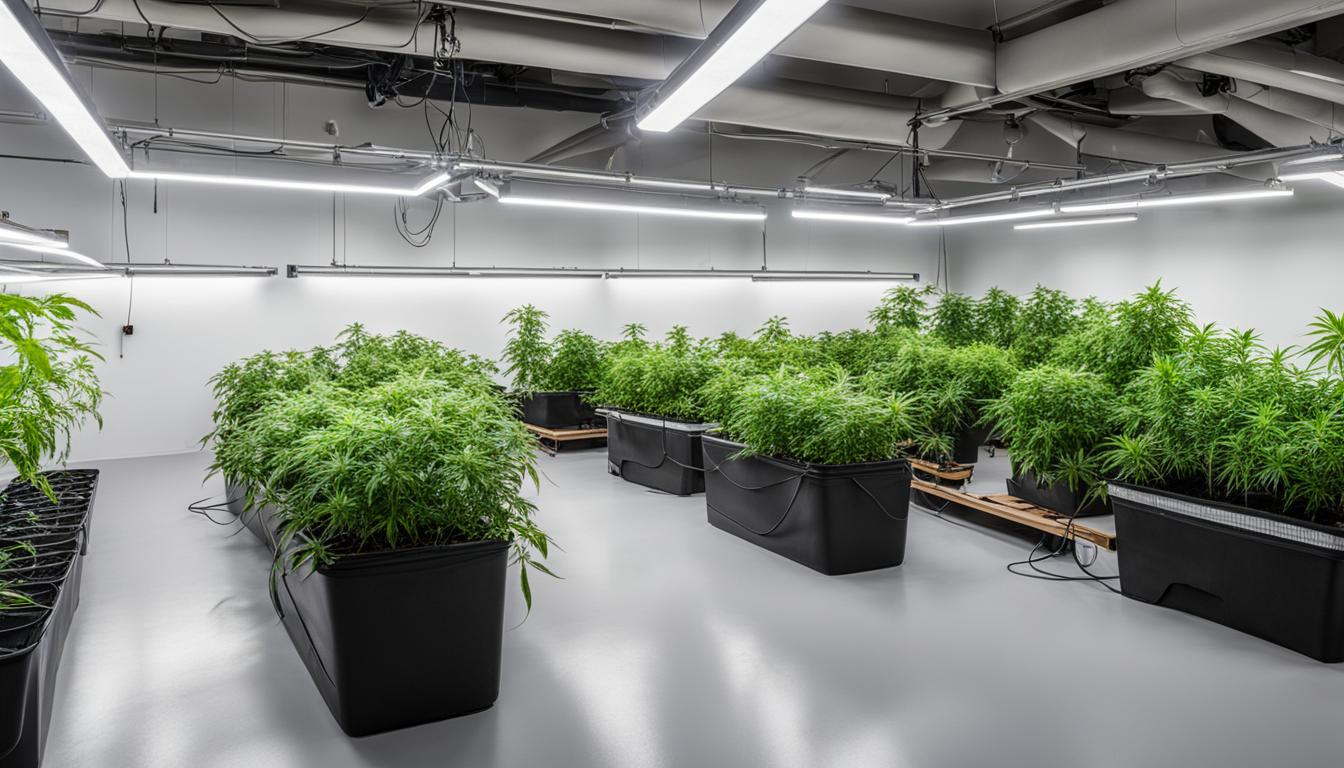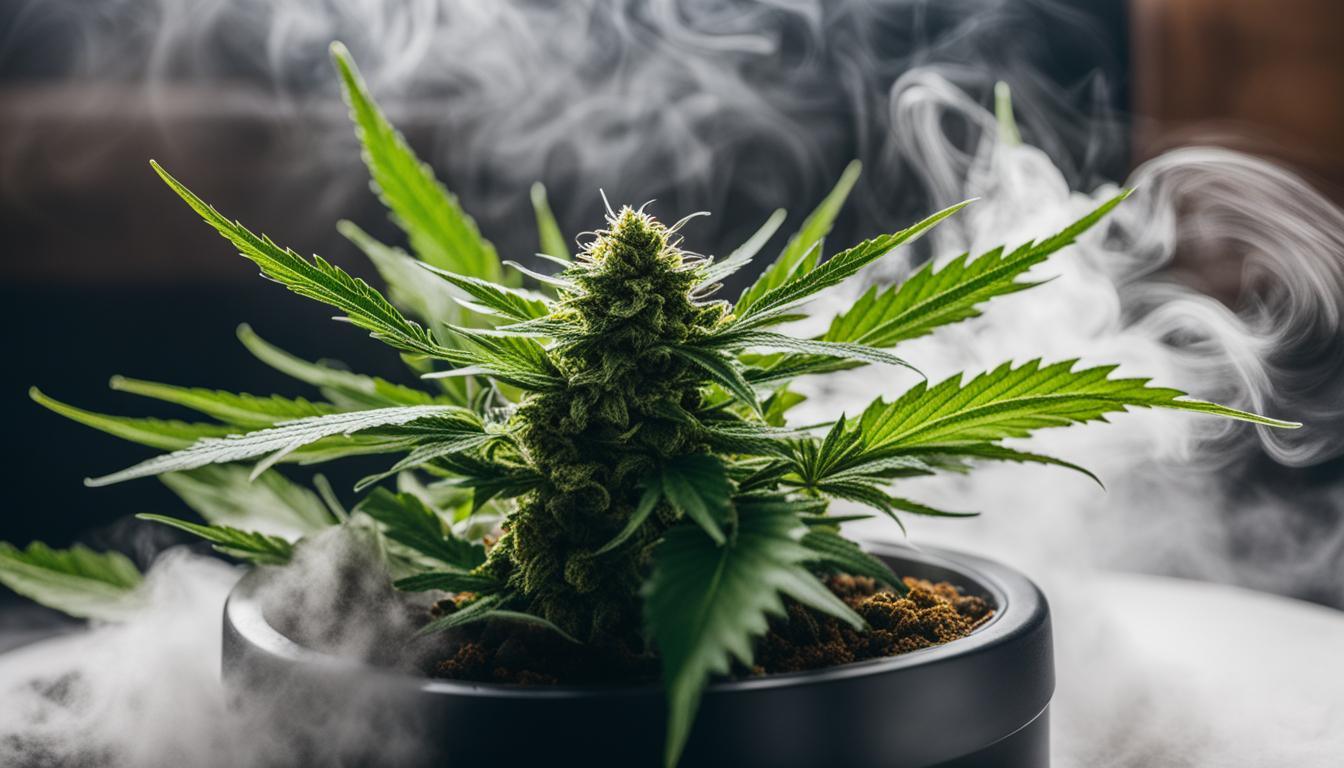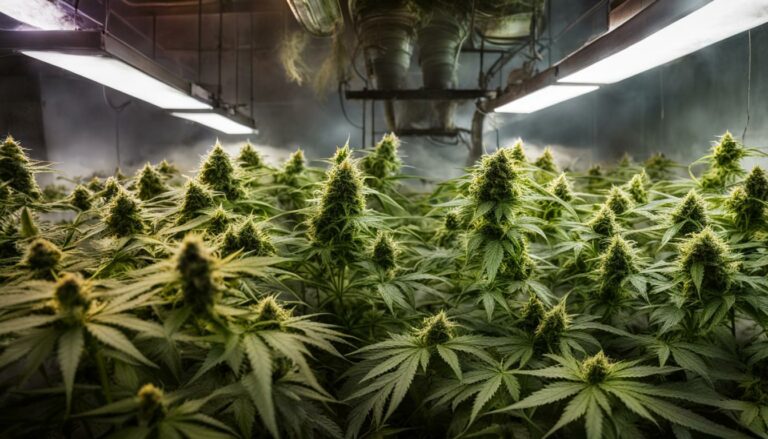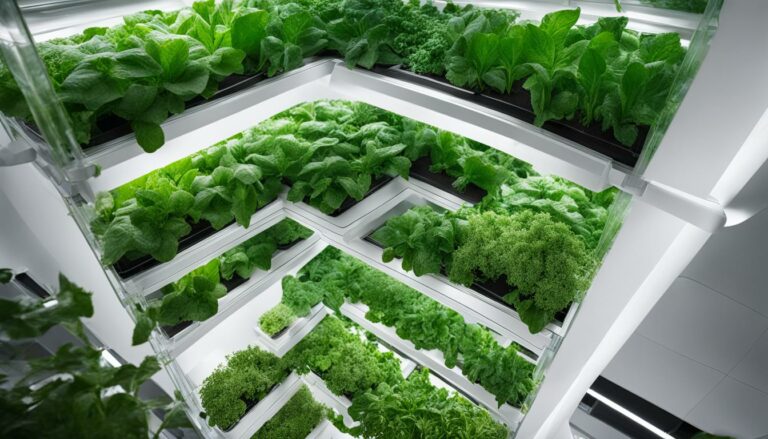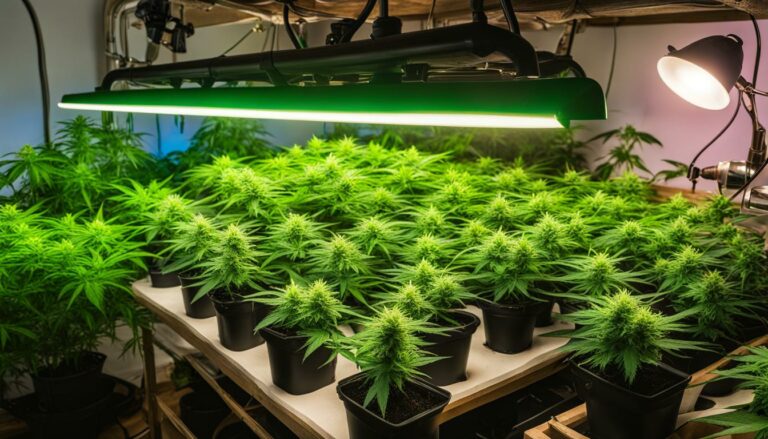Cannabis Harvesting: Timing and Techniques
Welcome to our comprehensive guide on cannabis harvesting! In this article, we will explore the art and science behind the perfect cannabis harvest. From understanding the best time to harvest cannabis to mastering the techniques of trimming, drying, and curing, we will equip you with the knowledge and skills to optimize your cannabis harvest yield.
Cannabis cultivation is a journey of patience, dedication, and craftsmanship. As you embark on this journey, it is crucial to familiarize yourself with the intricacies of cannabis harvesting. Timing is everything, and knowing the best time to harvest cannabis can make all the difference in achieving the desired potency, aroma, and flavor.
Throughout this article, we will delve into the various cannabis cultivation techniques that will help you achieve a successful harvest. We will discuss the indicators that signal when to harvest cannabis, share essential tips for preparing your grow space, and provide a detailed list of the tools and equipment you need for a smooth harvest process.
The journey of cannabis cultivation extends beyond just harvesting. We will guide you through the step-by-step process of harvesting cannabis, from cutting the branches to properly drying and curing them. We will also explore strain-specific harvesting techniques and the art of cannabis trimming, ensuring you produce a high-quality final product that truly showcases the unique characteristics of your chosen strain.
Lastly, we will share strategies for optimizing your cannabis harvest yield. From maximizing bud production through proper nutrition and pruning to understanding the impact of strain-specific factors, we will empower you to enhance your cultivation outcomes.
So, whether you are a novice grower or an experienced cultivator looking to refine your skills, join us on this enlightening journey through the world of cannabis harvesting. Let’s unlock the secrets of timing, techniques, and yield optimization together!
When to Harvest Cannabis
Determining the optimal time to harvest cannabis is a crucial step in achieving the desired potency and effects. Harvesting too early can result in lower THC levels, while harvesting too late may lead to a decline in quality. To ensure you harvest your cannabis at the right time, it’s essential to pay attention to several indicators that signify the plant’s readiness.
Trichome development is one of the most reliable indicators to determine when to harvest cannabis. Trichomes are tiny, mushroom-shaped glands that produce cannabinoids and terpenes, the compounds responsible for the plant’s effects and aroma. When the trichomes change from clear to milky white or amber, it indicates that the THC levels are at their peak. Many growers prefer to harvest when the trichomes are predominantly milky white for a more balanced high, while others wait until they turn amber for a more relaxing effect.
Another indicator to consider is the pistil coloration. Pistils are the hair-like structures that protrude from the buds. During the flowering stage, these pistils are white or light-colored, but as the harvest approaches, they start to change in color. If most of the pistils have turned from white to dark red or brown, it’s a sign that the plant is nearing maturity.
Additionally, observing leaf degradation can provide valuable insights into the plant’s readiness for harvest. As the plant nears maturity, the leaves may start to yellow and wither. This natural degradation indicates that the plant has reached its peak and is ready to be harvested.
| Indicator | Signs of Readiness |
|---|---|
| Trichome development | Milky white or amber trichomes |
| Pistil coloration | Dark red or brown pistils |
| Leaf degradation | Yellowing and withering leaves |
By closely monitoring these indicators, you can determine the best time to harvest your cannabis plants and achieve the desired potency and effects. Remember, each strain may have slightly different harvesting cues, so it’s essential to familiarize yourself with the specific characteristics of your chosen strain.
Preparing for Cannabis Harvest
As the cannabis cultivation cycle nears its end, it’s crucial to prepare your grow space and create the ideal conditions for a successful harvest. Proper preparation will help preserve the potency, aroma, and overall quality of your harvested cannabis. In this section, we will explore the key steps and considerations for preparing your cannabis plants for harvest.
Optimizing Grow Space
Before harvesting your cannabis plants, it’s important to ensure that your grow space is optimized for the task. This includes maintaining the ideal temperature and humidity levels. Aim for a temperature range between 18-26 degrees Celsius (65-80 degrees Fahrenheit) and a humidity level of around 45-55%. These conditions will help prevent mold growth and preserve the potency of the buds.
Additionally, it’s essential to choose the right time of day and weather conditions for harvesting. Ideally, harvest during the morning hours when the temperature and humidity are at their lowest point. This reduces the risk of mold formation during the drying process. Furthermore, avoid harvesting on rainy or excessively humid days as this can impact the drying process and compromise the quality of your harvest.
Inspecting and Cleaning Your Harvest Tools
Before starting the harvest, take the time to inspect and clean all the tools and equipment you’ll be using. This includes trimming shears, gloves, collection trays, and any other tools specific to your harvest process. Cleaning your tools will help prevent the spread of bacteria or contaminants onto your plants, ensuring a clean and safe harvest.
Harvest Timing
Timing plays a crucial role in the success of your cannabis harvest. The optimal harvest time can vary depending on the strain and desired effects. Keep a close eye on the trichome development and pistil coloration of your plants. Trichomes should appear cloudy or amber, indicating that the THC levels are at their peak. Additionally, check for the yellowing and drying of the fan leaves, which can be a sign that the plants are ready for harvest.
By following these preparations and considering the ideal conditions for cannabis harvest, you’ll be well on your way to achieving an exceptional yield of high-quality cannabis.
Table: Ideal Conditions for Cannabis Harvest
| Temperature | Humidity | Time of Day | Weather Conditions |
|---|---|---|---|
| 18-26 degrees Celsius (65-80 degrees Fahrenheit) | 45-55% | Morning hours | Avoid rainy or excessively humid days |
Essential Tools for Cannabis Harvesting
Having the right tools and equipment is crucial for a smooth and efficient cannabis harvest. Whether you are a small-scale grower or a commercial cultivator, investing in high-quality tools will not only save you time but also ensure the best possible outcome for your harvest. Here are some essential tools that every cannabis grower should have:
1. Magnifying Lenses for Trichome Inspection
Trichomes, the resinous glands on cannabis flowers, play a vital role in determining the ideal harvest time. Magnifying lenses or jeweler’s loupe with at least 30x magnification are essential for closely inspecting trichomes and assessing their color and clarity. This will help you determine the perfect moment to harvest your cannabis plants for optimal potency and flavor.
2. Trimming Shears
Trimming shears are a must-have tool for any cannabis grower. These specialized scissors are designed to remove leaves and excess foliage from the buds without damaging the delicate trichomes. Look for shears with sharp, stainless steel blades and comfortable handles to ensure precise and comfortable trimming.
3. Gloves
When handling cannabis plants during harvest, it is crucial to wear gloves to prevent contamination and maintain hygiene. Choose nitrile or latex gloves that fit well and offer dexterity, allowing you to handle the plants with care. Gloves also help protect your hands from resin and sticky plant material.
4. Collection Trays
Collection trays are essential for keeping your harvested buds organized and preventing any loss of precious trichomes. These trays provide a clean surface to collect the trimmed buds and make it easier to transfer them to the drying and curing process. Look for trays with raised edges to prevent any spills or loss of valuable resin.
5. Drying and Curing Supplies
Proper drying and curing are crucial for achieving the best flavor, aroma, and potency in your cannabis harvest. Invest in drying racks or screens to allow air circulation around the buds, preventing mold and ensuring even drying. Additionally, curing jars with airtight lids are essential for the slow and controlled curing process that enhances the taste and smoothness of the final product.
By equipping yourself with these essential tools, you’ll be well-prepared to handle every step of the cannabis harvesting process. Remember to clean and maintain your tools regularly to ensure their longevity and efficiency. With the right tools at your disposal, you’ll be able to achieve a successful and rewarding cannabis harvest.

How to Harvest Cannabis: Step by Step
Harvesting cannabis is an exciting and rewarding part of the cultivation process. To ensure the best results, it’s important to follow a step-by-step guide that covers the essential techniques and processes involved. In this section, we will provide you with a comprehensive overview of the cannabis harvesting process, from cutting the branches to proper drying and curing techniques.
Step 1: Determining the Right Time to Harvest
Before beginning the harvesting process, it’s crucial to determine the optimal time to harvest your cannabis plants. This decision is based on several factors, including the strain, desired potency, and individual preferences. To determine the right time, you can look for visual indicators such as the color of the trichomes and pistils. Trichomes should appear cloudy or amber, while pistils should have darkened and receded.
Step 2: Cutting and Trimming the Branches
Once you have determined that your plants are ready for harvest, it’s time to cut the branches. Using clean and sharp pruning shears, carefully remove the branches from the plant. Be sure to remove any fan leaves that may have become yellow or brown. After cutting the branches, it’s important to trim away excess foliage and sugar leaves. This will help enhance the appearance and quality of the final product.
Step 3: Proper Hanging, Drying, and Curing
After trimming, it’s crucial to properly hang the branches in a cool, dark, and well-ventilated space for drying. This process allows the moisture to evaporate slowly, resulting in a smoother smoke and more potent effects. It’s important to monitor the drying process closely, ensuring that the branches are drying evenly and not becoming too dry or moldy.
Once the branches are dry, they can be transferred to containers or curing jars for the final curing process. Curing is essential for developing the flavors and aromas of the cannabis while also further enhancing its potency. Maintain a consistent level of humidity and temperature during the curing process to achieve the best results.
Step 4: Storing and Enjoying Your Harvest
After the curing process is complete, it’s time to store your harvested cannabis properly. Use airtight containers to preserve the quality and freshness of the buds. Store them in a cool, dark place away from direct sunlight and moisture. Properly stored cannabis can last for months, allowing you to enjoy the fruits of your labor long after the harvesting process.
Harvesting cannabis is a rewarding experience that requires attention to detail and patience. By following these step-by-step techniques, you can ensure that your cannabis harvest is of the highest quality, potency, and flavor.
Harvesting Different Strains
Harvesting cannabis is a delicate process that requires a deep understanding of the specific strain being cultivated. Each strain has its own growth patterns and maturity timelines, making it crucial to adapt your harvest techniques accordingly. By employing strain-specific harvest techniques, you can maximize the potency, flavor, and overall quality of your cannabis crop.
One key consideration when harvesting different strains is the varying maturation rates of the buds. Some strains may have buds that ripen at different times, with some being ready for harvest earlier than others. In such cases, a technique called progressive harvesting can be employed. This involves harvesting the fully mature buds first, while allowing the less mature buds to continue developing. This ensures that you achieve optimal potency and flavor in each harvested bud, rather than compromising the entire crop by harvesting too early or too late.
Another important factor to consider is the trichome development of the specific strain. Trichomes are the tiny resin glands that contain the cannabinoids and terpenes responsible for the therapeutic and psychoactive effects of cannabis. Monitoring the trichomes’ appearance and maturity is crucial in determining the ideal time for harvest. Strains with clear trichomes are usually harvested for a more uplifting and energetic effect, while strains with amber trichomes tend to produce a more relaxed and sedative experience.
When it comes to harvesting different strains, it’s essential to adapt your techniques to suit the unique characteristics of each strain. By understanding the growth patterns, maturity timelines, and trichome development of your specific strains, you can ensure a successful and rewarding harvest, yielding high-quality, potent, and flavorful cannabis to enjoy.
| Strain | Maturation Time | Trichome Appearance | Effect |
|---|---|---|---|
| Strain 1 | 8 weeks | Clear trichomes | Uplifting, energetic |
| Strain 2 | 10 weeks | Amber trichomes | Relaxing, sedative |
| Strain 3 | 9 weeks | Mixed trichomes | Balance of effects |
Cannabis Trimming
Trimming is an essential step in the cannabis harvesting process, ensuring that the final product is of high quality and desirable appearance. Cannabis trimming techniques vary, with two common methods being wet trimming and dry trimming. Let’s explore the differences and benefits of each approach.
Wet Trimming vs Dry Trimming
Wet trimming involves removing the leaves immediately after harvest while the plant still retains moisture. This method allows for easier leaf removal, as the leaves are more pliable and less likely to break or crumble. Additionally, wet trimming minimizes the risk of mold or mildew growth during the drying process, as the removed leaves contain excess moisture.
Dry trimming, on the other hand, involves allowing the plant to dry partially or completely before trimming. This method allows the leaves to dry up and curl, making them easier to remove. Dry trimming can be beneficial for preserving trichomes, which contain the plant’s cannabinoids and terpenes. By allowing the plant to dry, the trichomes become brittle and less likely to be damaged during the trimming process.
Ultimately, the decision between wet trimming and dry trimming depends on personal preference and the desired outcome. Wet trimming is ideal for those looking for a quicker and easier trimming process, while dry trimming may be preferred by those seeking to optimize the preservation of trichomes.
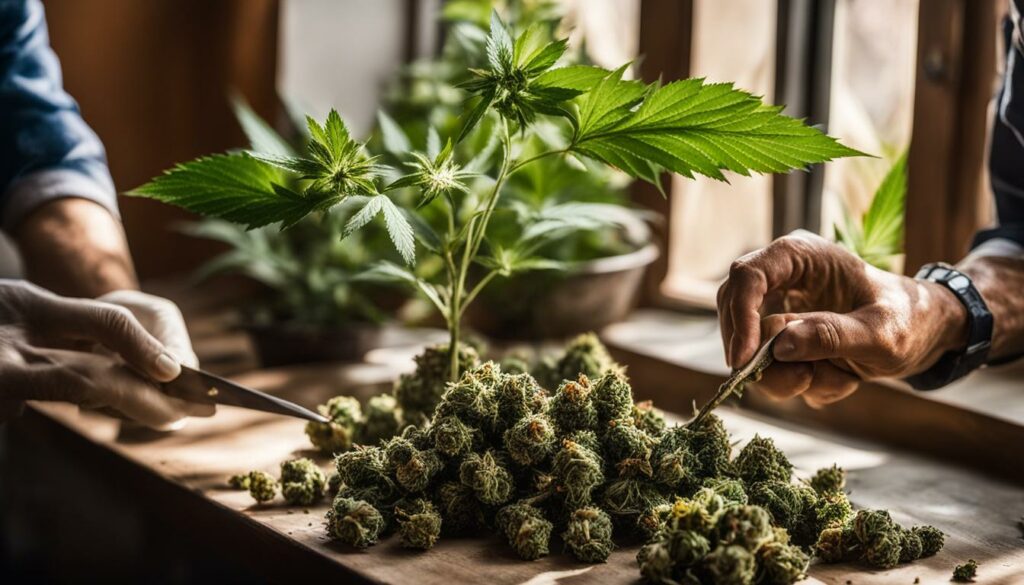
| Cannabis Trimming Techniques | Description |
|---|---|
| Sugar Leaf Trimming | Trimming the large fan leaves and retaining the smaller sugar leaves, which are rich in trichomes. |
| Bud Trimming | Trimming the buds to remove any excess leaves, stems, or unstructured plant material. |
| Manicuring | Fine-tuning the appearance of the buds by removing any remaining imperfections or unwanted material. |
| Kief Collection | Collecting the trichomes that have been removed during the trimming process to create kief, a potent cannabis concentrate. |
Cannabis Drying and Curing
Proper drying and curing are essential steps in the cannabis harvesting process. These techniques not only ensure the preservation of the plant’s potency and flavor but also play a crucial role in eliminating excess moisture and preventing the growth of mold or mildew. By following the correct procedures, you can enhance the overall quality and shelf life of your harvested cannabis.
When it comes to drying cannabis, the first step is to trim off any excess fan leaves and sugar leaves. This allows for better air circulation and prevents moisture build-up in the buds. Once trimmed, the buds should be hung upside down in a dark, well-ventilated area with controlled humidity and temperature levels. The ideal conditions for drying cannabis are a temperature of around 18-24°C (65-75°F) and a humidity level of 45-55%. It’s important to monitor the drying process regularly and make adjustments as needed.
After the buds have dried, they are ready for the curing process. Curing involves placing the dried buds in airtight containers, such as glass jars, and storing them in a cool, dark place for several weeks. This allows for the slow release of moisture and the development of complex flavors and aromas. During the curing process, it’s important to “burp” the jars regularly by opening them for a few minutes each day to release any built-up moisture and prevent mold formation.
Benefits of Proper Drying and Curing:
- Preserves potency and flavor
- Eliminates excess moisture
- Prevents mold and mildew
- Develops complex flavors and aromas
- Improves overall quality and shelf life
By following the proper drying and curing techniques, you can ensure that your harvested cannabis maintains its optimal quality and delivers a superior experience for consumption. Take the time and care needed to perfect this essential stage of the cultivation process, and you will be rewarded with a final product that is truly exceptional.
| Drying | Curing |
|---|---|
| Trim excess leaves | Place dried buds in airtight containers |
| Hang buds upside down in a well-ventilated area | Store in a cool, dark place |
| Control temperature and humidity | “Burp” jars regularly to release moisture |
| Monitor drying process regularly | Allow for several weeks of curing |
Cannabis Harvest Yield Optimization
When it comes to cannabis cultivation, maximizing your harvest yield is a goal worth pursuing. By optimizing your growing techniques and implementing effective strategies, you can increase your cannabis yield and maximize bud production. In this section, we will explore various methods and practices to help you achieve the highest possible harvest yield.
Proper Nutrition
One key factor in optimizing cannabis harvest yield is providing your plants with the right nutrients throughout their growth cycle. A well-balanced nutrient regimen, tailored to the specific needs of your plants, can promote healthy growth and maximize bud production. Consider using organic fertilizers and supplements to provide essential macronutrients, micronutrients, and beneficial microbes. Regularly monitoring nutrient levels and adjusting your feeding schedule accordingly can help prevent deficiencies or nutrient lockout, which can negatively impact yield.
Pruning and Training
Pruning and training techniques can significantly impact cannabis harvest yield. By selectively removing unwanted foliage and focusing plant energy on bud development, you can encourage larger, denser buds. Techniques such as topping, low-stress training (LST), and screen of green (SCROG) can help create an even canopy and increase light penetration, resulting in more uniform bud development. Additionally, removing any lower, shaded buds that are unlikely to reach maturity can redirect energy to the more productive top canopy.
Environmental Control
Creating and maintaining optimal environmental conditions is crucial for maximizing cannabis harvest yield. Monitoring temperature, humidity, and airflow can help prevent stress, pest infestations, and disease outbreaks that can negatively impact yield. Providing proper lighting, whether it’s natural sunlight or artificial grow lights, is essential to ensure adequate photosynthesis and bud development. Additionally, optimizing irrigation practices, including proper water and nutrient delivery, can help promote healthy root development and maximize yield.
| Method | Description | Benefits |
|---|---|---|
| Topping | Removing the top growth of a plant to encourage lateral branching | Creates multiple main colas, increases overall bud production |
| Low-Stress Training (LST) | Manipulating plant branches to create a horizontal canopy | Increases the number of bud sites, improves light distribution |
| Screen of Green (SCROG) | Weaving branches through a mesh screen to create an even canopy | Optimizes light exposure, promotes uniform bud development |
By implementing these strategies, you can optimize your cannabis harvest yield and increase the quantity and quality of your buds. Remember, every cultivation journey is unique, and it may take time to find the techniques that work best for your specific strains and growing environment. With patience, dedication, and a commitment to continuous learning, you can cultivate impressive cannabis harvests year after year.
Conclusion
In conclusion, understanding the timing and techniques involved in cannabis harvesting is crucial for achieving a successful and high-quality yield. By carefully monitoring the indicators of readiness, such as trichome development and pistil coloration, you can determine the optimal time to harvest your cannabis plants.
Proper preparation, including creating ideal conditions in your grow space and obtaining the necessary tools and equipment, is essential for a smooth and efficient harvest. From magnifying lenses for trichome inspection to trimming shears and drying and curing supplies, having the right tools at hand ensures that you can carry out each step of the harvesting process with precision and care.
With a step-by-step guide to follow, you can confidently navigate the cannabis harvesting process, whether you choose the “cutting the branches” method or the “whole plant” method. Trimming, a critical step in the process, can be approached using wet or dry trimming techniques, and attention to detail when removing sugar leaves will result in a final product of exceptional quality.
Lastly, the proper drying and curing of your harvested cannabis is essential for maximizing its flavor, aroma, and potency. Being mindful of humidity and temperature levels, as well as monitoring moisture content, will ensure a successful curing process and prevent the development of mold.
By applying strain-specific techniques and optimization strategies, such as proper nutrition and pruning, you can further enhance your cannabis harvest yield. Remember, the journey of cannabis cultivation is an art, and with the right knowledge and techniques, you can achieve remarkable results.
FAQ
When is the best time to harvest cannabis?
The optimal time to harvest cannabis is when the trichomes are mostly milky white and some amber, the pistils are mostly orange or brown, and the fan leaves have started to yellow and die off.
How should I prepare for cannabis harvest?
To prepare for cannabis harvest, ensure that your grow space has controlled temperature and humidity levels. Choose the right time of day and weather conditions for harvesting to minimize moisture and maximize potency.
What tools do I need for cannabis harvesting?
Essential tools for cannabis harvesting include magnifying lenses for trichome inspection, trimming shears, gloves, collection trays, and drying and curing supplies.
What is the step-by-step process for harvesting cannabis?
The step-by-step process for harvesting cannabis involves either cutting the branches or harvesting the whole plant. It includes trimming fan leaves and sugar leaves, hanging and drying the branches properly, and monitoring moisture content.
How do I harvest different strains of cannabis?
Harvesting different strains of cannabis requires understanding their specific growth patterns and maturity timelines. Techniques like progressive harvesting can be used for unevenly ripe buds.
What are the different techniques of cannabis trimming?
Cannabis trimming techniques include wet trimming and dry trimming. Wet trimming involves trimming the leaves immediately after harvest, while dry trimming involves waiting until the buds are dry to trim.
How do I properly dry and cure harvested cannabis?
Proper drying and curing involve maintaining optimal humidity and temperature levels. Monitor moisture content and prevent mold during the curing process to enhance flavor, aroma, and potency.
How can I optimize my cannabis harvest yield?
Strategies for optimizing cannabis harvest yield include providing proper nutrition, utilizing pruning techniques, and implementing training methods to maximize bud production.



